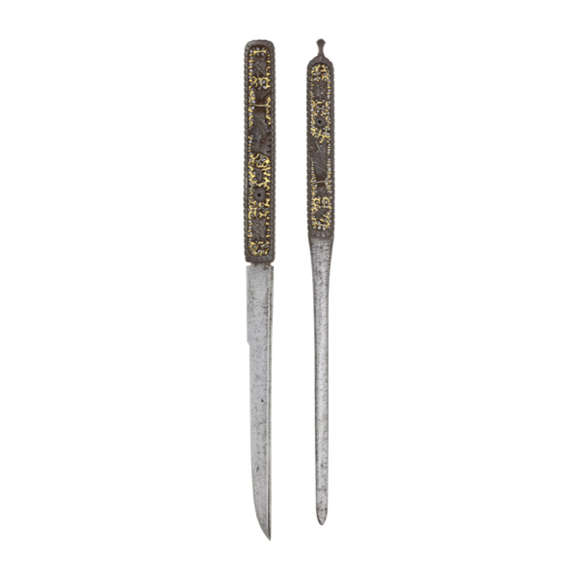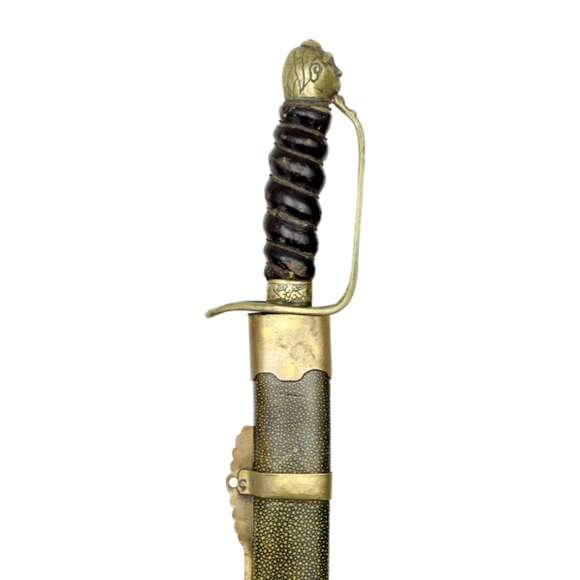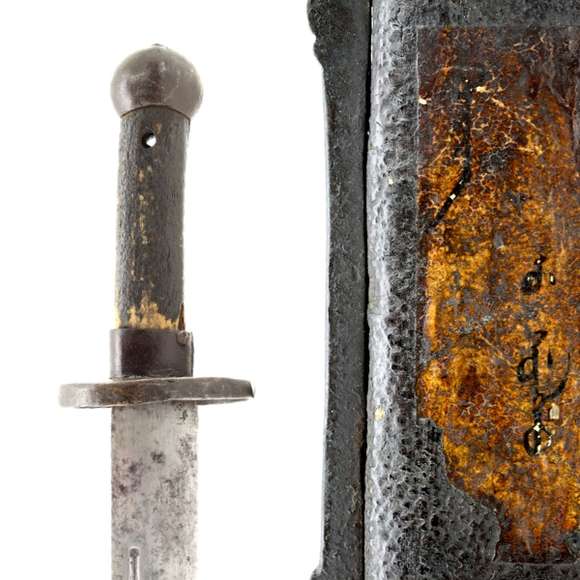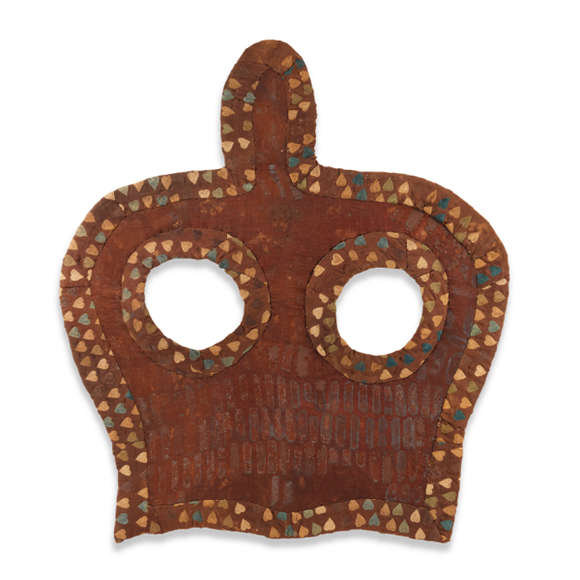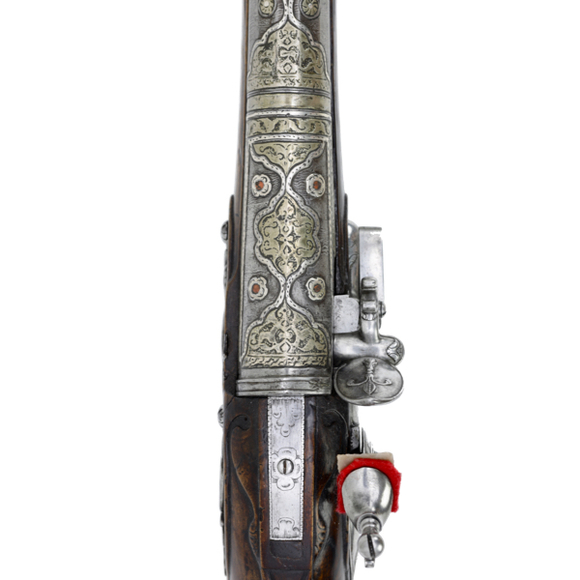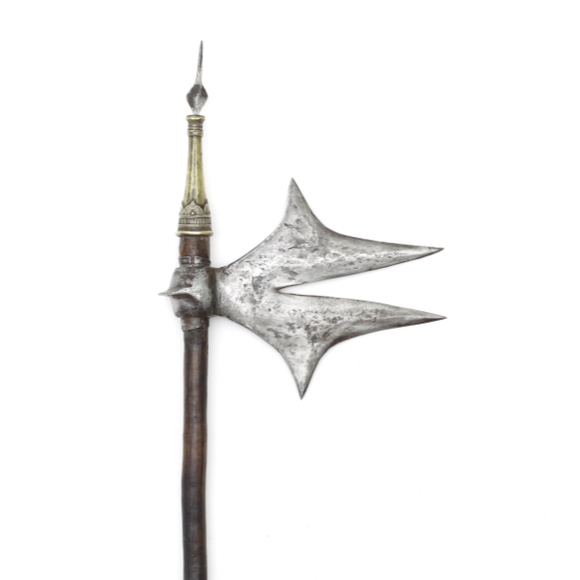The only set of its type known to me in both private and museum collections.

13.8 x 20.7 x 6.4 cm
13.7 x 20.8 x 6.5 cm
767 & 759 grams
Forged iron
China
14th-16th century
Description
An interesting set of Ming period stirrups, possibly inspired by nomad designs.
They are constructed with a relatively narrow but thick beaded frame that splits halfway down the center. The platforms consist of a Chinese coin motif and two cloud heads each. Two more cloud heads and a double axe head shape appear at the top, through which a hole is drilled for the swiveling mounts with rectangular loops.
They are entirely forged, and the layering of the forge folding is visible on the sides. The insides show considerable wear from extensive use.
There are two round paper labels attached to the inside with an old collection number: E152.

Dating
Such narrow-framed stirrups with open sides are seen on Tang, Yuan and Ming artwork. For an early form of the general shape, dated to the 12th-14th centuries, see Metropolitan Museum accession number 1999.119a, b. For a somewhat later iteration that was dated to the 15th-18th century, see 2002.220a, b.
The general form can also be seen on 15th-century artwork, such as "A Tartar Huntsman on His Horse" in the Freer and Sackler Gallery, F1911.266. Stirrups with open sides like ours are seen among others on the Departure Herald of the Jiajing period (1522–1566 A.D.) in the National Palace Museum in Taiwan.

Detail of the Departure Herald showing the open side stirrups. 16th century.
National Palace Museum, Taipei.
Swiveled loop
Unusual on the set presented here is the swiveled strap loop. Such swiveled stirrups are seen already in Tang-period artwork.


Tang-era painting of a horseman, 8th century.
Han Gan, died AD 783.
National Palace Museum, Taipei.

Painting of Khitan ruler Yelübei (AD 900-937).
National Palace Museum, Taipei.

"Tartar horsemen", 14th century.
By Zhao Lin, died circa AD 1367.
Freer Gallery of Art Collection accession number F1940.1.
(For a high-resolution colored version of the same scene, see: Museum of Fine Arts, Boston 52.1380.
Theirs is probably erroneously attributed to the 11th-13th century.)

Consort Yang Mounting a Horse, 14th century.
Freer Gallery of Art Collection accession number F1957.14.
Conclusion
The swiveled construction is mostly depicted in artwork from the Tang dynasty up to the early Ming. It is notable that quite a few paintings that show this type are depicting nomad people such as Mongols or the Khitan. Both Tang and early Ming rulers recognized the steppe warrior's effectiveness in the field and keenly adopted their weapons and horse tackle.
However when we look at the earliest form of these swiveled stirrups, they appear to be rounder than our example, somewhat lower and with the curve continuing through much of its base. The overall form of this set, with flat bottom and straighter sides, makes me date this set to the period of the 14th-16th centuries.
An interesting pair of stirrups of a very rare form, nicely executed.

















A standard pattern Qing military saber, but with the rare addition of a label in Manchu.
Silk horse mask from the Xianbei ruled dynasty which ruled northern China from 386 to 534 A.D.

